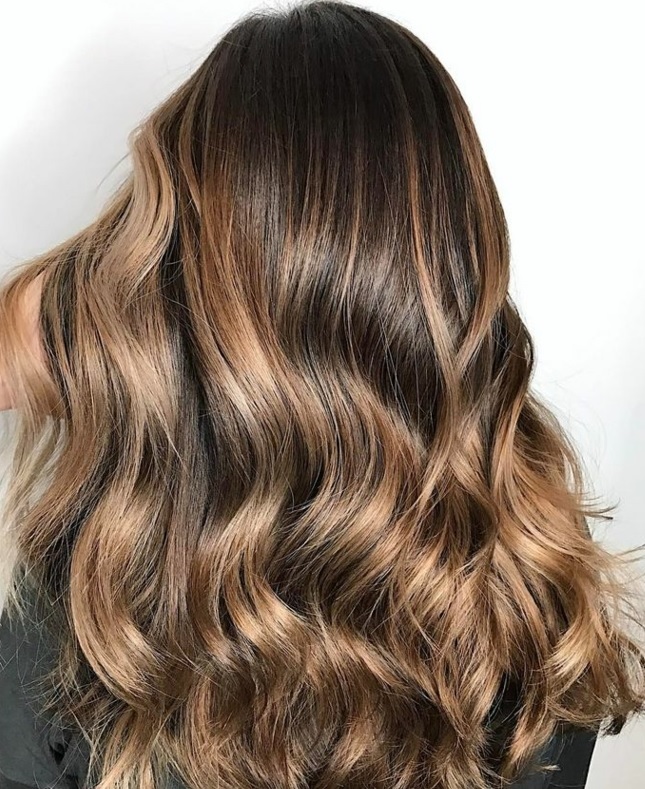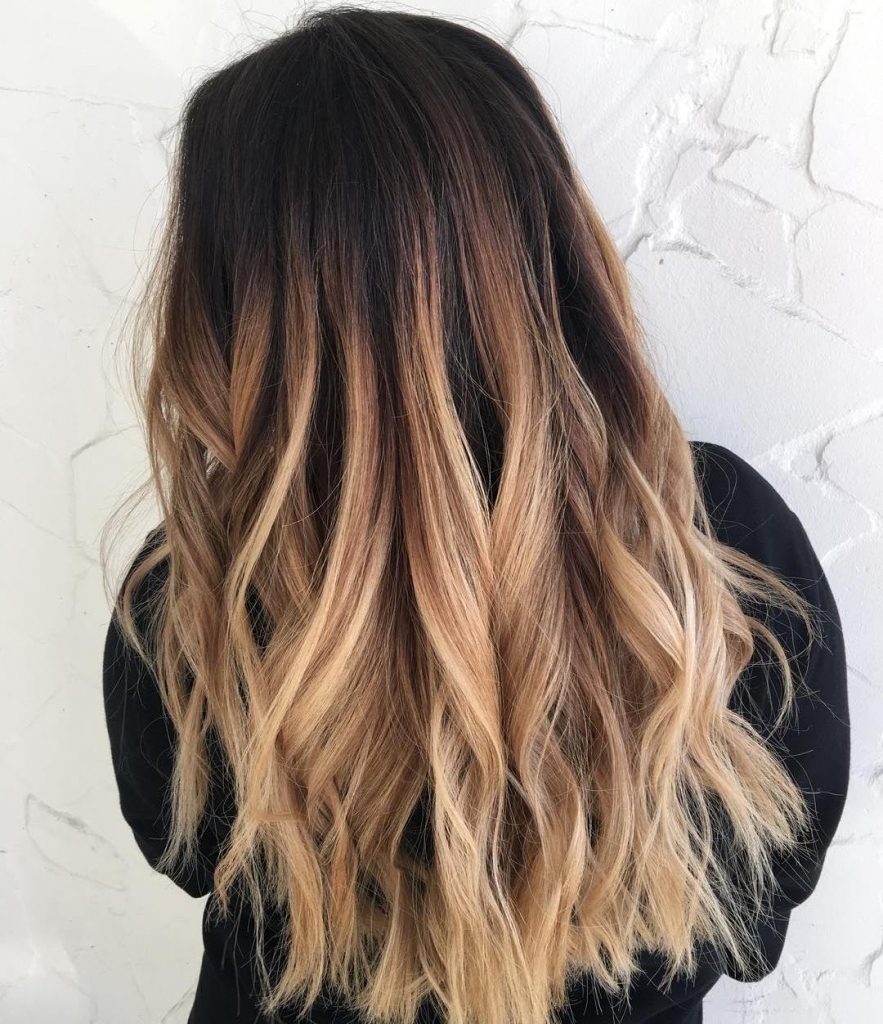Uniform hair dyeing is a classic. Very boring classics that aren’t respected anymore. After all, natural hair is now a trend, and natural hair rarely has the same color over its entire length: UV lighter strands at the tips than at the roots. A gradient, or gradient dyeing, is designed to achieve this trendy soft transition. However, its bright special effects are also possible – everything depends on the selected shade and imagination of your colorist!
What is gradient hair dyeing?
Gradient coloring is a type of tinting, which creates a smooth effect on the hair color transition. It’s a trend in hair coloring in 2020-2021
There’s a lot of technique: it can be an ombre, and balayage, and chatouche, and splash lights. There are also many color combinations: the natural transition of tone from dark at the roots to light at the tips, the reverse effect, and even the transition of natural shade to a bright nuance.
Usually, to create a gradient, hair is first discolored, as if stretching the lightening compound along strands for a smooth transition, and then tinted into the desired shade.
Achieving a truly beautiful gradient is not easy – it is not up to every master and requires experience, skill, and artistic flair. At home, this procedure is almost impossible – at least because of the process of clarification, which is better to expose your hair only under the supervision of a professional.
Pros and cons
There are many advantages to gradient coloring:
it refreshes the image;
looks natural (if, of course, you choose the appropriate colors) and at the same time unusual;
suitable for women of all ages;
Growing roots of hair with this dye is no problem because only the lower part of the hair shaft is involved;
fits any color type, as you can choose any shade of gradient.
However, this type of coloring also has disadvantages:
it’s not suitable for short hair: there’s no place to play the gradient;
the gradient requires the skills of a hairdresser and is impossible at home.
Types of gradient staining
Gradient coloring is a common name for several types of coloring. We will tell you what are the most popular and what is the difference between them.
Balayage

Balayage is a coloring in which the tips are brightened by applying a V-shaped composition. Thus, there is a gradient effect, but the boundary between the colors can not be understood: the shades are smoothly transferred to each other at different levels.
Ombre

In the ombre technique, the gradient is more pronounced, as the transition of colors is located on a smaller area – literally a few centimeters – and on the same level.
Splash lights

With this gradient coloring option, the hair looks like it’s in sunlight 24 hours a day: a light stripe on a dark background.
Photo ideas of gradient staining
From dark to light

The most common combination that looks as natural on the hair as possible. In nature, the strands become lighter with time – more from UV exposure, so the roots are usually darker than the tips. Gradient coloring from dark to light reproduces this order and makes it possible to get lighter without affecting the entire hair mass.
From brown to dark

It’s not the most obvious combination, but it does exist. In general, the transition from brown or blonde hair to dark ends (or vice versa – darkening the roots on brown hair) only requires toning, without lightening. But in the opposite situation – creating a transition to brown hair on dark hair – will already need to be melting.
From light to bright
Bright strands have been in the trend for several seasons. The most interesting way they look in gradient coloring format, and the easiest way to make a bright color on blonde hair – they do not need to be pre-colored.

Here are a few ideas for inspiration: neon-yellow balayage on light tangles, soft pink or peach ombre on blonde hair. At the same time, bright strands on dark hair look no less beautiful and spectacular.
From dark to bright

Girls with dark hair, who dared to try a bright gradient coloring, you will definitely have to lighten up some of the strands, otherwise, the color just will not be visible. Proven color combinations: bright fiery red and copper for dark brooms, purple, green and deep blue for brunettes.
Photo with gradient options on the hair of different lengths
The gradient looks different on each hairstyle. And the length of the hair is not the least of it.
Short hair

Gradient dyeing needs space: on very short hair it will simply not be visible. The minimum length – to the middle of the neck, or better – to the shoulders. But even in this case, it is better than the transition begins quite high – above the level of ears.
On medium-length hair
 On medium-length hair, color transitions may start already lower, but not below the upper chin point. So the gradient will look as harmonious as possible.
On medium-length hair, color transitions may start already lower, but not below the upper chin point. So the gradient will look as harmonious as possible.
On long hair

Long strands are the best canvas for a gradient. You can even make a complicated transition by using several colors.
Technique of execution
There is nothing complicated in the algorithm of gradient coloring: first, hair is usually lightened, and the composition is applied just below the place where the transition of color will begin, and then gently stretched upward along with the hair. Then, when the strands are sufficiently brightened, they are washed with a special shampoo that stops the process, and apply a tinting agent: usually on the roots – one thing, on the brightened tips – another.
execution technique
The successful result of gradient coloring depends solely on the professionalism of the performer: to apply compositions to the hair must be quick and clear, to select shades – without error, to arrange accents – virtuoso. An attempt to make a gradient dye at home, and even to yourself, usually ends in the style of photography from the series “waiting – reality”, so experts highly recommend not to engage in amateur activities and trust the experience of certified masters.
Care after procedure
Although gradient coloring does not affect the entire volume of hair, it still requires a review of the care of the hair. Firstly, the strands are likely to have been lightened, which means they have become more porous and now need more moisture. Secondly, any pigment has the property of leaving the hair. To slow down this process, you need to use special products for colored hair, as well as protect curls from UV light.
Council. The only thing worth taking care of separately is buying a special care shampoo. It will wash away paint residue and be used to maintain color.




